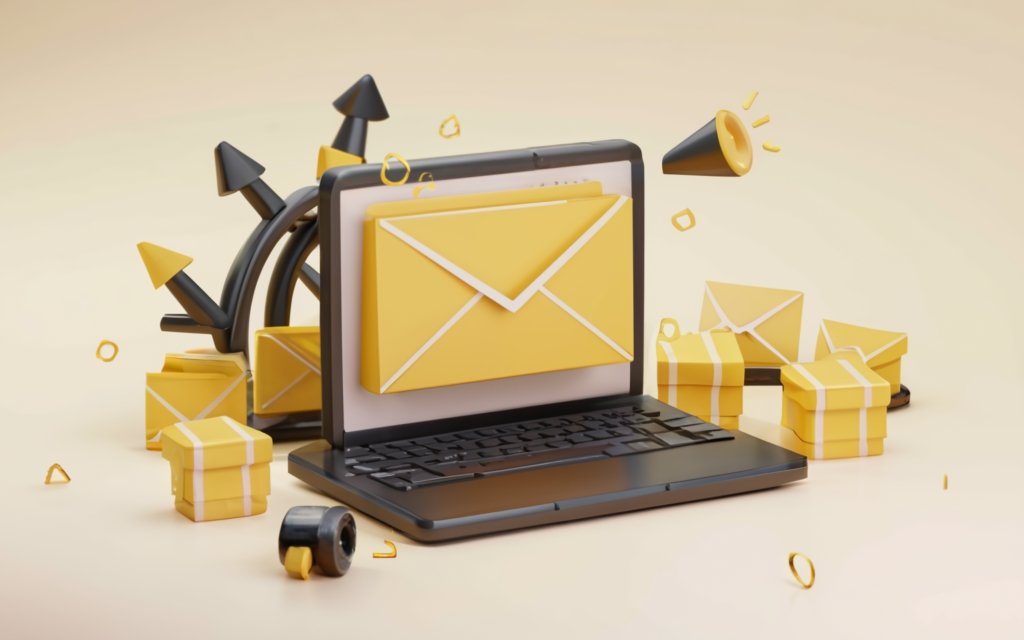Ever wondered why some emails get opened immediately while others languish in the inbox? It’s often all about the subject line, especially when it comes to follow-up emails. What is the best check in email subject line? Let’s dive into why crafting the perfect follow-up email subject line is more art than science.
Why Follow-Up Email Subject Lines Matter
1. Increases Open Rates
A compelling subject line can help skyrocket the open rates of your email campaigns. Think of your subject line like the cover of a book – it needs to be intriguing enough to entice the reader. A great subject line for a sales follow-up email, for instance, can make the difference between a lead moving forward or dropping off. It’s not just about being seen; it’s about being read.
2. Enhances Email Relevance
Personalizing your subject line shows that the email content is tailored to the recipient. This relevance is crucial in a world where inboxes are flooded daily. A personalized subject line for your next follow-up email can increase the likelihood that your email will be opened, as it resonates more with the recipient. It’s about making a connection, not just sending a message.
3. Prevents Misinterpretation
The subject line conveys the purpose of your email at a glance. A misleading subject line may get your email opened, but it can also lead to mistrust or confusion. Ensure your subject line accurately reflects the content of your email. This clarity helps in maintaining transparency and trust, especially important in networking follow-up emails or when nurturing a relationship with your email list.
4. Facilitates Better Organization
A specific subject line can help both you and the recipient keep track of email threads. For instance, if your subject line shows a clear reference to a previous email or a specific topic, it makes it easier to search and organize emails. This is especially helpful in long email threads or when you need to refer back to a particular conversation.
Write a Follow-up Email Template: How To
Crafting an effective follow-up email is an art that combines precision, timing, and the right words. Here are eight best practices to guide you in writing a follow-up email that gets results.
1. Craft a Compelling Subject Line
The follow-up subject line is your first hurdle in getting the recipient to open your email. Use this subject line to create a sense of continuity from your initial email. For example, “Following up on our last conversation” or “Touching base post-meeting.” A subject line that’s intriguing yet relevant can significantly increase the chances of your email being opened.
2. Personalize Your Approach
Personalizing your follow-up email subject and body shows the recipient that you’ve put thought into the message. Reference specific points from your first email or meeting. For instance, “John, adding to our discussion on XYZ.” This approach not only makes your email stand out but also shows your genuine interest in the recipient’s needs.
3. Be Clear and Concise
Clarity is key in follow-up emails. Your recipient should understand the purpose of your email right away. Keep your language straightforward and your subject line short. For example, “Quick follow-up on our proposal.” This ensures that your message is clear both in the subject line and the email body.
4. Timing is Everything
The timing of your follow-up email can be as crucial as its content. Wait long enough to give your recipient time to respond to your first email, but not so long that they forget about you. A good rule of thumb is to follow up within a week of your initial email.
5. Provide Additional Value
Each follow-up should provide additional value to the recipient. Whether it’s a useful resource, a piece of relevant information, or a solution to a problem they mentioned, make sure your email adds to the conversation. For example, “I thought this article might be helpful for your current project.”
6. Include a Clear Call to Action
What do you want the recipient to do after reading your email? Whether it’s scheduling work, a meeting, answering a question, or reviewing a professional document, make your call to action clear and easy to follow. For example, “Could we schedule a call next week to discuss further?”
7. Use a Professional Tone
The tone of your email should match the relationship you have with the recipient. If you’re not well-acquainted, it’s best to maintain a professional and respectful tone. As you build a relationship, you can adjust your tone accordingly.
8. Follow-Up Respectfully
Remember, following up is about persistence, not pestering. If you don’t receive a response after a couple of follow-ups, it’s okay to send a final email acknowledging their busy schedule and leaving the door open for future communication. For example, “I understand you’re busy, feel free to reach out when it’s more convenient.”
Incorporating these practices into your follow-up emails can significantly enhance their effectiveness, making it more likely that your messages will be read and responded to. Remember, a well-crafted follow-up email is a powerful tool in your communication arsenal.
What Should be Included in Follow Up Email Subject Line
Creating an effective subject line for a follow-up email is crucial in ensuring your message stands out and prompts the recipient to open the email. Here are key elements to include in your follow-up email subject lines:
1. Clarity of Purpose
The subject line should clearly state the purpose of your email. Whether it’s a sales follow-up email or a check-in after a meeting, the recipient should know exactly what to expect. For example, “Following up on our demo meeting” or “Next steps after our call.” This clarity in the subject line helps set the right context for your email message.
2. Reference to Previous Interaction
A good follow-up email subject line often references a previous interaction or email. This helps jog the recipient’s memory and establishes a connection. For instance, “Revisiting our conversation from last week” or “Further to your query about our services.” Such subject lines work because they remind the recipient of your earlier engagement.
3. Urgency and Timeliness
If your follow-up email is time-sensitive, make sure your subject line conveys a sense of urgency or timeliness. However, this should be used judiciously to prevent your email from seeming pushy. An example could be, “Urgent: Response needed by Friday” or “Reminder: Offer ends tomorrow.”
4. Personalization
Personalizing the subject line can increase the likelihood of your email being opened. Use the recipient’s name or reference something specific to them. For example, “John, here’s the information you requested” or “Lisa, a quick update on your order.” Personalized subject lines show that the email is tailored and relevant to the recipient.
5. Brevity and Simplicity
Keep your subject line short and to the point. A lengthy subject line might get cut off, especially on mobile devices. Aim for a subject line that gets the message across in a few words. For instance, “Quick follow-up” or “Touching base post-meeting.” for check in email subject line.
6. Intrigue or Curiosity
Sometimes, sparking curiosity can be an effective strategy. Intriguing subject lines might include, “Have you seen this yet?” or “A unique idea for your project.” These types of subject lines should be used carefully to ensure they align with the body of your email and don’t come across as misleading.
7. Professional Tone
The language in your subject line should match the tone of your email and be appropriate for your relationship with the recipient. Whether formal or casual, the subject line should reflect the same level of professionalism as the email body.
8. Call to Action
If appropriate, include a call to action in your subject line. This can be particularly effective in sales follow-up emails. For example, “Schedule your demo today” or “Reserve your spot now.” This approach can be a powerful motivator for the recipient to open the email and take action.
Remember, the subject line is the first impression of your email. A well-crafted subject line can significantly increase the chances of your follow-up email being noticed and opened. Use these tips to write subject lines that are clear, engaging, and effective.
Effective Follow-up Email Subject Line Examples for Good Open Rate
Here are 60 examples of effective follow-up email subject lines designed to encourage good open rates:
- “Quick update following our meeting”
- “Touching base on our last conversation”
- “Following up from our call last week”
- “Checking in: Next steps for our project”
- “Your thoughts on our recent demo?”
- “John, let’s pick up where we left off”
- “Re: Our discussion about [specific topic]”
- “Wanted to follow up on your request”
- “Can we talk about your feedback on [product/service]?”
- “Reminder: Your input is needed by Friday”
- “Lisa, here’s the info you asked for”
- “Following up on the proposal I sent”
- “Missed you at the webinar, here’s a recap”
- “Let’s continue our chat about [specific topic]”
- “Your opinion matters: Quick follow-up”
- “Exciting news to share about our last meeting”
- “Ready to move forward with your decision?”
- “Checking in: Any updates on your end?”
- “A quick nudge about our pending collaboration”
- “Revisiting our conversation about [specific topic]”
- “Just following up on my previous email”
- “Have you had a chance to review my last email?”
- “Your feedback on [product/service] is valuable”
- “Urgent: Your confirmation needed for next steps”
- “Further to your query about our services”
- “Let’s finalize our agreement”
- “A gentle reminder: [task/action] needed”
- “Your thoughts on our proposal?”
- “Next steps for our collaboration?”
- “Re: Your interest in [product/service]”
- “Still interested in moving forward?”
- “We missed you at our event, here’s what happened”
- “Can we address your concerns about [topic]?”
- “Your perspective needed on [topic]”
- “Action required: Your response needed”
- “Following up on our recent discussion”
- “Let’s discuss your thoughts on our meeting”
- “Reconnecting about [specific topic]”
- “A quick follow-up on your recent inquiry”
- “Eager to hear your thoughts on our last chat”
- “Reminder: [action/item] due soon”
- “Let’s continue our discussion about [topic]”
- “Did you get a chance to look at my last email?”
- “Seeking your feedback on [specific topic]”
- “Let’s finalize the details discussed”
- “Re: Our conversation about [specific topic]”
- “Your input needed on [specific topic]”
- “Following up: Did you receive my last message?”
- “Let’s set a date for our next meeting”
- “Checking in: Your thoughts on our proposal?”
- “A quick reminder about our upcoming deadline”
- “Ready to take the next step in our project?”
- “Your decision needed on [specific topic]”
- “Re: Your request for more information”
- “Let’s revisit our previous discussion”
- “Your action required for project progression”
- “Touching base: Your thoughts on moving forward?”
- “A follow-up on your recent request”
- “Can we finalize our plans for [specific topic]?”
- “Eager for your feedback on our last meeting”
Each of these subject lines is crafted to be specific, engaging, and relevant to the recipient, increasing the likelihood of your email being opened and read.
Main Mistakes When You Write a Follow-up Email Subject Line
1. Being Too Vague or Generic
A common mistake in writing a subject line for a follow-up email is being too vague. Subject lines like “Just checking in” or “Follow-up” lack specificity and fail to grab the recipient’s attention. It’s essential to be clear and direct about the purpose of your email. A specific subject line would provide a preview of the email content, making it more likely for the recipient to open the email.
2. Overpromising and Underdelivering
An email subject line that overpromises and underdelivers can damage your credibility. Avoid using sensational or misleading language just to get the email opened. For instance, using “Exciting opportunity” for a routine sales follow-up email can lead to disappointment and mistrust. Ensure your subject line accurately reflects the content of your email.
3. Lack of Personalization
Failing to personalize the subject line is a missed opportunity. Personalization can significantly increase open rates. Instead of a generic “Following up,” use the recipient’s name or reference a specific detail from your previous interaction. For example, “John, here’s the update you requested” shows effort and consideration, making the email more appealing.
4. Ignoring the Previous Conversation
A follow-up email should naturally continue the conversation from where it left off. Ignoring the context of your previous interaction can make your email seem out of place. Use your subject line to directly connect with the previous email or meeting. For example, “Further to our discussion on XYZ” shows continuity and respect for the ongoing dialogue.
5. Using Overly Long Subject Lines
Long subject lines often get cut off, especially on mobile devices, and may fail to convey the intended message. A concise subject line is more effective. Aim for brevity while maintaining clarity. For example, instead of “This is a follow-up to the email I sent last week regarding our upcoming meeting,” use “Quick follow-up on next week’s meeting.”
6. Not Conveying Urgency When Needed
Sometimes, it’s crucial to convey urgency in your follow-up email, especially if there’s a deadline involved. Not doing so can result in missed opportunities or delayed responses. Use phrases like “Response needed by tomorrow” or “Urgent: awaiting your feedback” to highlight the time-sensitive nature of your email.
7. Using Jargon or Complex Language
Using technical jargon or complex language in your subject line can confuse the recipient, especially if they’re not familiar with the terminology. Keep your language simple and accessible. The subject line should be easily understood at a glance. For example, instead of “Query regarding the implementation of the proposed solution,” use “Question about our proposed plan.”
Remember, the subject line is the first thing your email recipient sees. Avoiding these common mistakes can increase the chances of your follow-up email being opened and read of check in email subject line.
Expert Opinion
In the realm of email marketing, particularly when it comes to crafting a sales follow-up email, the importance of a well-thought-out subject line cannot be overstated. The subject line is the first impression you make on your recipient; it’s what determines whether your email gets opened or ignored. A favorite follow-up email strategy among experts is to use a subject line that directly references a point of discussion from the previous interaction. This creates a sense of continuity and personalization that is more likely to engage the recipient.
When considering subject lines you can use for your next follow-up email, it’s crucial to think about the relationship between the subject line and body of the email. They should be in harmony, with the subject line accurately reflecting the content of the email. This coherence ensures that the recipient’s expectations are met, which is vital for maintaining trust and interest. An excellent subject line is one that is clear, concise, and compelling. It should be intriguing enough to pique the recipient’s interest but not misleading or overly sensational.
Furthermore, when you send an email, especially a mass email, it’s important to avoid using a generic or one-size-fits-all subject line. Each recipient should feel like the email is specifically tailored to them. This might mean segmenting your email list and using a different subject for each segment, based on their unique interactions with your business.
Lastly, the following subject of your email should always be considered in the context of your overall email marketing strategy. It’s not just about getting one email opened; it’s about fostering a longer-term engagement with your audience. Therefore, each subject line to share should be thought of as a step in a larger journey, guiding the recipient towards a deeper relationship with your brand on sales follow up email rather than next follow-up email subject line near the subject line is excellent for check in email subject line.
How to Design a Follow-up Subject Line
Designing a follow-up subject line requires a balance between clarity and engagement. The subject line is one of the most critical elements as it influences whether the recipient will open an email. For a sales follow-up email, it should be direct yet intriguing, prompting the recipient to learn more. An effective subject line makes a connection with the previous interaction, ensuring continuity. For instance, “Next steps for our discussed plan” directly ties to the prior conversation. Additionally, personalization can significantly increase open rates. Including the recipient’s name or a specific detail from your last interaction makes the email feel more tailored. Remember, a good subject line should reflect the body of the email, ensuring consistency and relevance of check in email subject line.
What Are Best Examples of Follow-up Email Subject
The best subject lines for follow-up emails are those that are clear, concise, and personalized. Real-world examples that work well include: “John, quick update on our last meeting,” “Your requested info on XYZ product,” or “Following up on our proposal.” These subject lines are effective because they directly address the recipient, making the email feel more personal. Subject lines that will get your email noticed often include a reference to a previous conversation or a specific point of interest for the recipient. This approach shows that you’re paying attention to the details and value the ongoing communication. The key is to make your subject line as relevant and engaging as possible to encourage the recipient to open the email and check in email subject line.
When to Send a Follow-up Email
The timing of sending a follow-up email can be as crucial as its content. Generally, it’s advisable to wait a few days after your initial contact to give the recipient time to respond. For a sales follow-up email, waiting 2-3 days after the initial pitch or meeting is standard. However, this can vary depending on the context and urgency of your message. If you discussed a specific follow-up timeline during your initial interaction, be sure to adhere to it. The goal is to remain persistent without being intrusive. Using an email marketing tool can help automate and schedule follow-ups, ensuring timely and consistent communication. Remember, the timing of your follow-up can significantly impact the response rate of check in email subject line.
When to Send a First Email Follow-up
The first email follow-up after a cold email should typically be sent within a week of the initial contact. This timeframe allows the recipient enough time to read and consider your initial message without your follow-up seeming too pushy. The subject line to follow in your first follow-up should reference your initial email. For example, “Revisiting my earlier message about XYZ.” It’s important to keep the tone polite and the content concise, focusing on adding value or offering additional information that might interest the recipient. The first follow-up is crucial as it can set the tone for future interactions, so ensure it aligns with the tone and content of your cold email. Remember, the goal is to remind the recipient of your initial email and encourage a response in check in email subject line.




